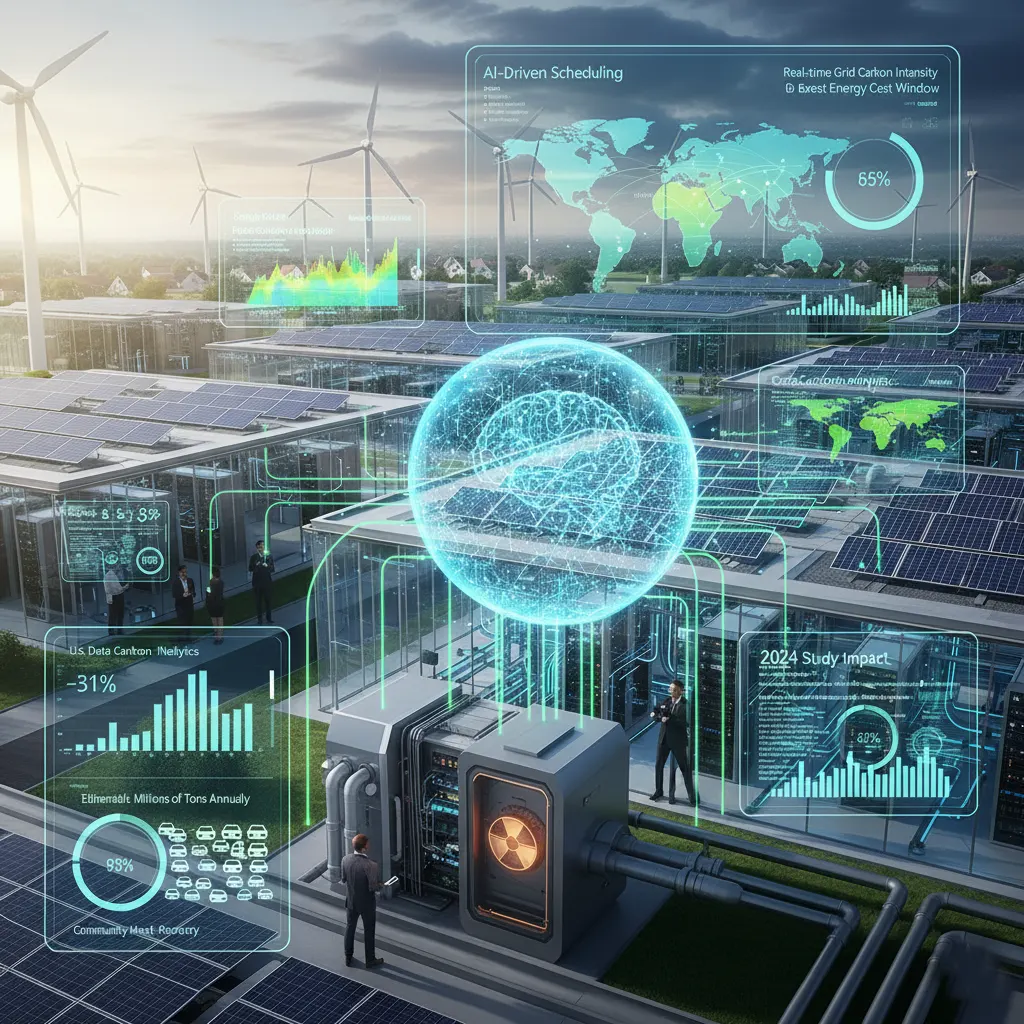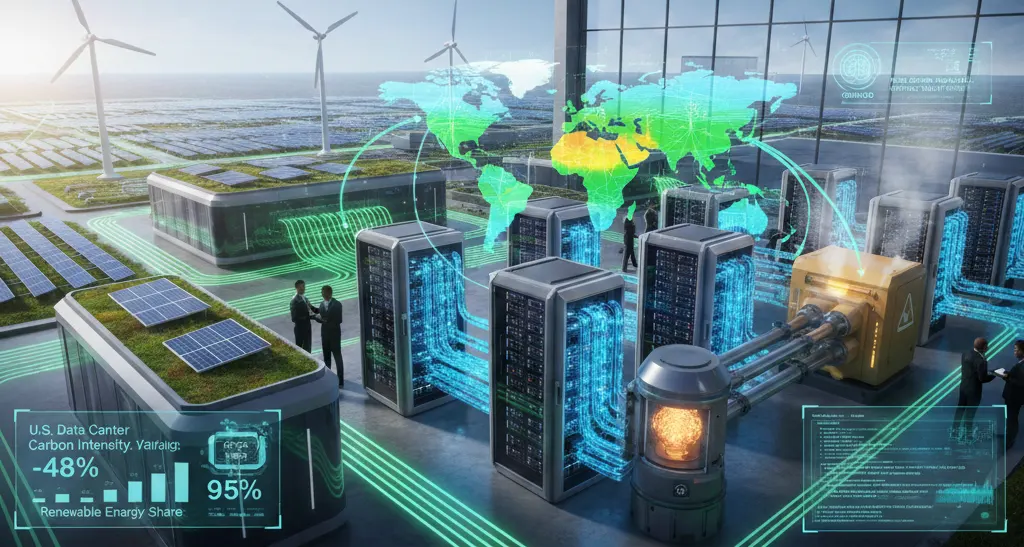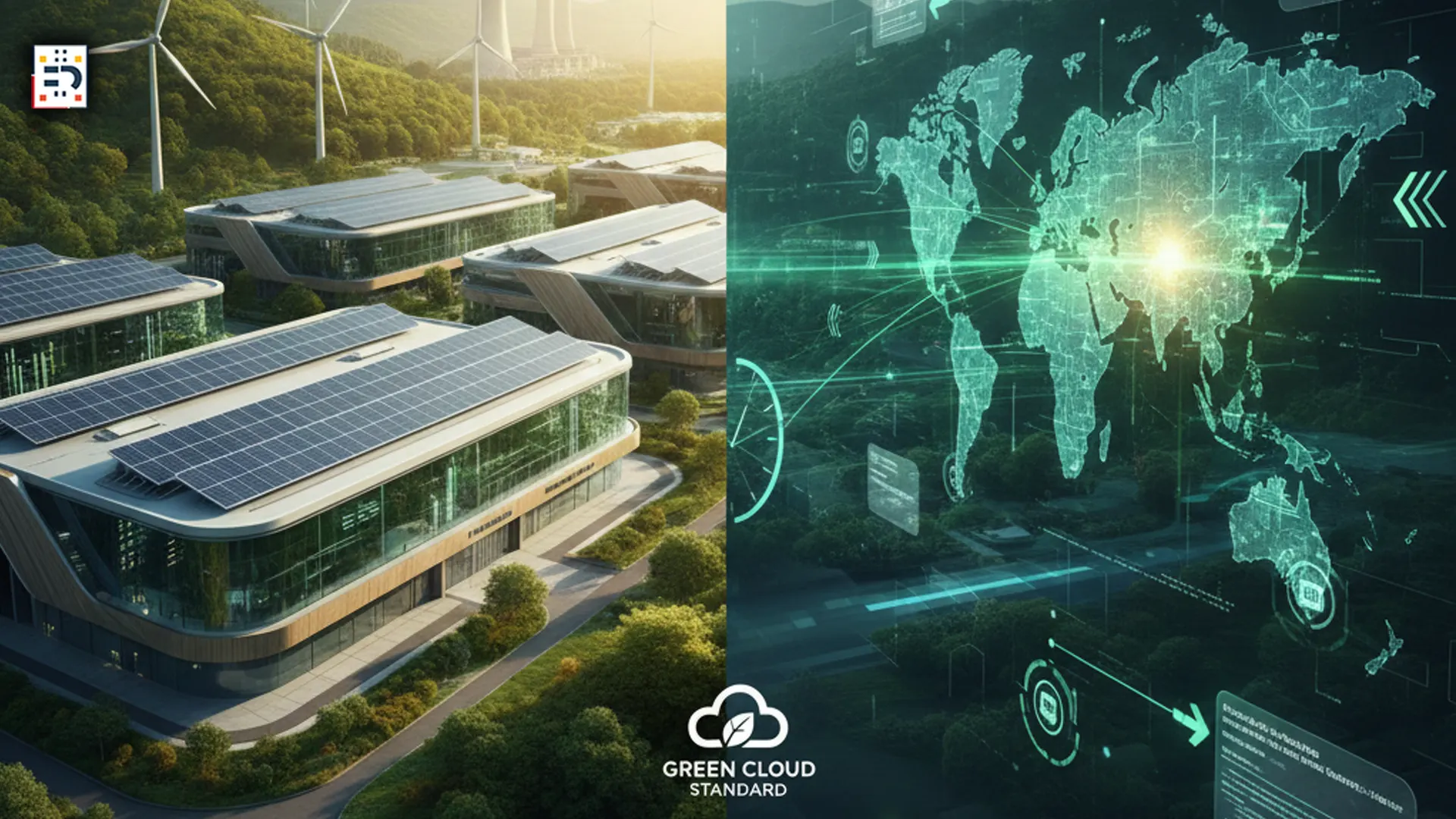The Digital Future Has a Carbon Problem
The cloud may feel weightless, but its environmental impact is anything but. As AI adoption accelerates, data centers have become one of the most energy-intensive industries in the United States. According to the U.S. Department of Energy, data centers consumed more than 4% of all U.S. electricity in 2024, equivalent to Pakistan’s annual power consumption.
By November 2025, the U.S. hosted 4,165 data centers—38% of global facilities—emitting 105 million metric tons of CO₂e between September 2023 and August 2024, or 2.18% of national greenhouse gas emissions.
With 95% of U.S. data centers located in regions with dirtier electricity than the national average and 56% of their power still fossil-fuel sourced, their carbon intensity sits 48% above the U.S. average.
As AI workloads grow—especially since a ChatGPT query uses ~10x more electricity than a Google search—the challenge is escalating fast.
The Sustainable Cloud Revolution: Two Pillars
The U.S. cloud industry is undergoing a sustainability transformation driven by:
- Carbon-Aware Scheduling
- Renewable & Low-Carbon Data Centers
Together, these form the backbone of green cloud computing.

1. Carbon-Aware Scheduling: Smarter Timing, Lower Emissions
Carbon-aware scheduling shifts computing tasks to moments and locations where electricity is cleaner. Instead of running workloads immediately, delay-tolerant tasks—like AI training—are executed when carbon intensity is lowest.
Platforms like Electricity Maps and EPA clean energy indicators provide real-time carbon data increasingly integrated into cloud schedulers.
Why It Works
Grid carbon intensity varies all day:
- Solar peaks mid-day
- Wind peaks overnight or during weather events
- Fossil fuels fill the gaps
Scheduling around these patterns reduces emissions with no quality loss.
Key 2025 Research Milestones
Recent studies show:
- 80% of 2024–25 research includes both temporal and geographic shifting (up from 35% before 2023).
- Geographic shifting reduces emissions by up to 16.3%.
- Multi-center algorithms achieve up to 61.7% emission reduction in simulation.
The MIT Energy Initiative is building flexible models for AI workload scheduling, balancing training needs, grid conditions, and reliability.
Real-World Results
A single large AI model can save thousands of megawatt-hours by shifting across clean energy windows—enough to power hundreds of U.S. homes for a year.
Tools like the Carbon-Aware SDK and CodeCarbon now help developers measure and reduce the emissions of individual jobs.
2. Renewable & Low-Carbon Data Centers: Powering the Cloud Sustainably
The green data center market reached $71.47B in 2024, expected to hit $392.08B by 2034 (18.56% CAGR). North America leads due to AI growth, regulation, and corporate sustainability pledges.
Major U.S. 2025 Announcements
Stargate Initiative – OpenAI, Oracle, SoftBank (Sept 24, 2025)
- 7 GW AI infrastructure
- $400B investment across Texas, New Mexico, Ohio, and the Midwest
- +600 MW near Abilene
Vantage Data Centers (Aug 19, 2025)
- 1.4 GW “Frontier” Texas mega-campus
- $25B investment
- Advanced liquid cooling + closed-loop chillers
Amazon Richmond County, NC (June 4, 2025)
- $10B cloud + AI campus
- 20 buildings by 2028
- Grid-reliable siting near Duke Energy’s Smith complex

Sustainability Innovation
Deep Green – Nov 5, 2025
- 24 MW Lansing data center
- Community heat-recovery delivering free carbon-neutral heat
Oklo + Vertiv – July 2025
- Nuclear micro-reactors + advanced cooling integration
Schneider Electric + NVIDIA – June 2025
- Next-gen liquid-cooled AI factory designs for hyperscale adoption
Academic & Industry Convergence
U.S. researchers and companies are collaborating on:
- Integrated electrical + thermal energy systems
- Mixed-integer scheduling optimization
- Quality-adaptive computing for always-on services
- Distributed hybrid infrastructure (self-managed + colocation)
Major industry leaders—Digital Realty, Equinix, Dell, Cisco, IBM, Schneider Electric—are embedding sustainability across new U.S. data center builds.
Market Dynamics: The U.S. Green Data Center Boom
- North American green data center market (2025): $37.27B
- Projected CAGR: 17.4% through 2030
- Global green data center market (2025 → 2030): $48.26B → $155.75B (26.4% CAGR)
Challenges That Still Need Solving
1. Renewable Expansion Lag
A Goldman Sachs analysis projects 60% of rising data center electricity demand will come from fossil fuels, increasing emissions by 220M tons unless renewable deployment accelerates.
2. Regulatory Fragmentation
The EU enforces unified reporting rules, while the U.S. remains state-by-state, complicating compliance.
3. Operational Complexity
Scheduling often overlooks embodied carbon from server manufacturing and over-provisioning.
4. Grid Interconnection Delays
New renewable projects can take years to connect. Researchers at NREL are exploring AI to accelerate interconnection studies.
Building a Carbon-Smart Future
A sustainable U.S. cloud requires integrating:
Hardware Efficiency
Efficient GPUs/TPUs, model distillation, and quantization.
AI-Driven Scheduling
Schedulers that automatically pick:
- Lowest-carbon region
- Cleanest hour
- Best-fit hardware
- Lowest energy cost window
Accurate Carbon Accounting
Using CodeCarbon, Carbon-Aware SDK, Electricity Maps, and DOE emissions datasets.
Hybrid Clean Energy Mix
- On-site solar + storage
- Wind PPAs
- Micro-nuclear for baseload
- Community heat recovery

Equity and Environmental Justice
Low-income communities often live near fossil power plants supplying data centers. Smarter scheduling and renewable sourcing help reduce localized pollution.
A 2024 study found that if 50% of global AI workloads adopted carbon-aware scheduling, millions of tons of CO₂ could be eliminated annually, equal to removing hundreds of thousands of cars from U.S. roads.
Sustainability Is the New Standard
The shift toward carbon-aware scheduling and renewable-powered data centers is no longer optional—it’s the new industry baseline.
Billions in clean energy investment, advanced scheduling algorithms, nuclear-powered innovation, and AI-driven grid intelligence are reshaping how the U.S. cloud operates.
As one researcher noted:
“Energy efficiency is nearly maxed out. Carbon-aware scheduling is the next frontier—but not the final solution. Cleaner grids, better measurement, and smarter computing are all essential.”
The U.S. now has the technology, market momentum, regulatory pressure, and research ecosystem to build a greener digital future. Organizations that move quickly will lead this next era of cloud innovation—one powered by intelligence that is both artificial and environmental.
#GreenComputing #CarbonAware #SustainableCloud #DataCenters #RenewableEnergy #AIEnergy #GreenTech


